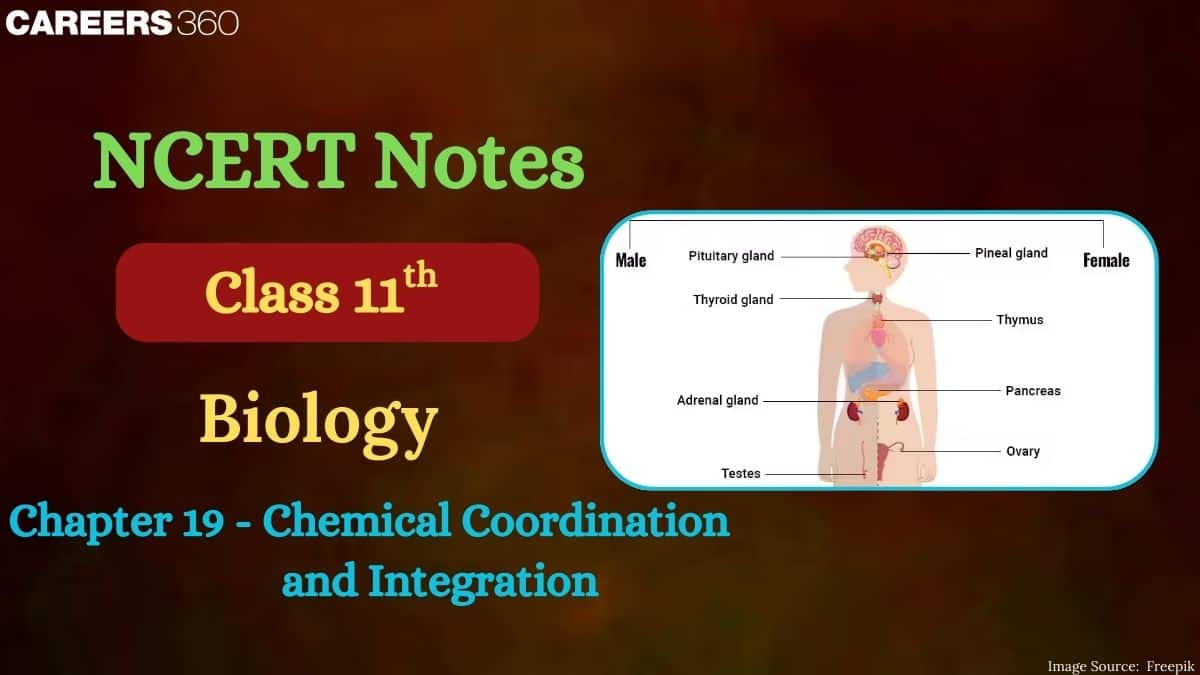Class 11 Biology Chapter 19 Chemical Coordination and Integration Notes
These notes explain hormones and their role in controlling body functions, and are great for last-minute preparation and concept clarity. Chemical Coordination and Integration Class 11 Notes includes topics like endocrine glands, hormone action, and feedback mechanisms.
Endocrine Glands And Hormones
- Endocrine glands are called ductless glands since they do not have ducts.
- The secretions of these ductless glands are known as hormones.
- These hormones are produced only in small amounts in the human body to facilitate many functions, like transport between cells.
- They function as intracellular messengers.
Human Endocrine System
The endocrine glands constitute the human endocrine system.
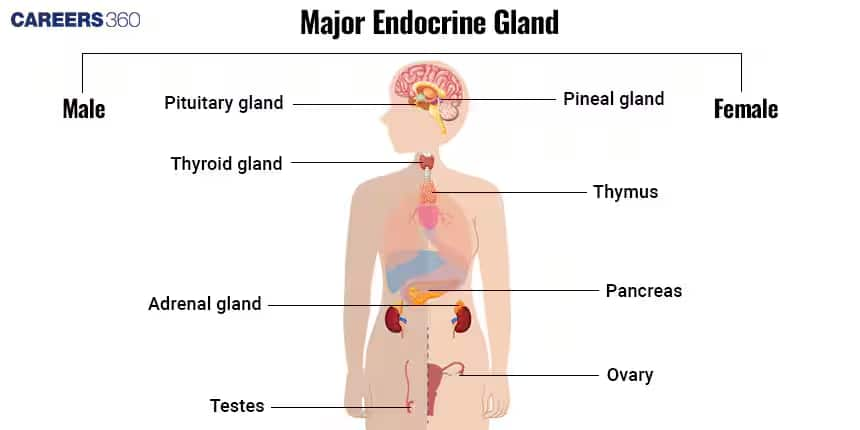
The Hypothalamus:
It forms the basal part of the diencephalon, the forebrain. It contains groups of neurosecretory cells called nuclei, which produce releasing and inhibiting hormones. Hormones of the hypothalamus are:
Releasing hormones: It stimulates the secretion of pituitary hormones.
Inhibiting hormones: It inhibits the secretion of pituitary hormones.
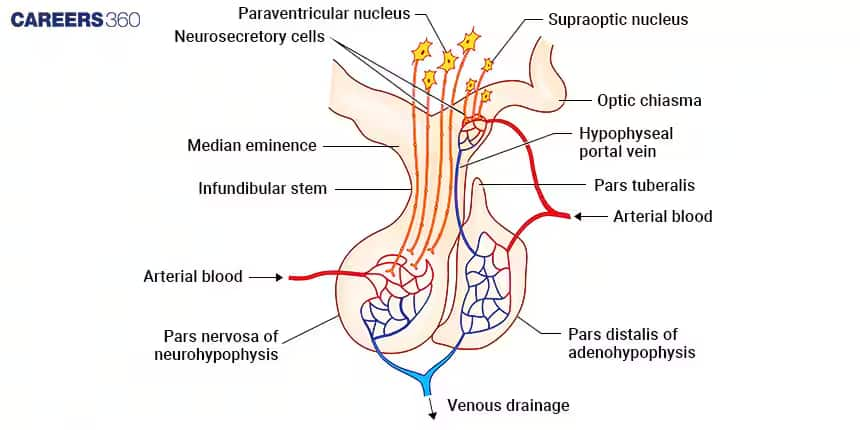
The Pituitary Gland
The pars distalis region produces several hormones like growth hormone (GH), prolactin (PRL), thyroid-stimulating hormone (TSH), adrenocorticotropic hormone (ACTH), luteinizing hormone (LH), and follicle-stimulating hormone (FSH).
Melanocyte-stimulating hormone (MSH) is produced by the Pars intermedia.
Oxytocin and vasopressin are synthesized in the hypothalamus (paraventricular & supraoptic nuclei) and stored in the posterior pituitary.
Hypersecretion of GH causes gigantism (abnormal growth of the body), and lower secretion of GH results in pituitary dwarfism (stunted growth).
Oxytocin causes vigorous contraction of the uterus at the time of childbirth. It also causes milk ejection from the mammary gland.
Vasopressin (antidiuretic hormone) acts in the kidney. It helps in the reabsorption of water and electrolytes by the distal tubules and hence reduces the loss of water through urine diuresis.
A disorder affecting the synthesis or release of ADH causes water loss and dehydration. It is called Diabetes Insipidus.
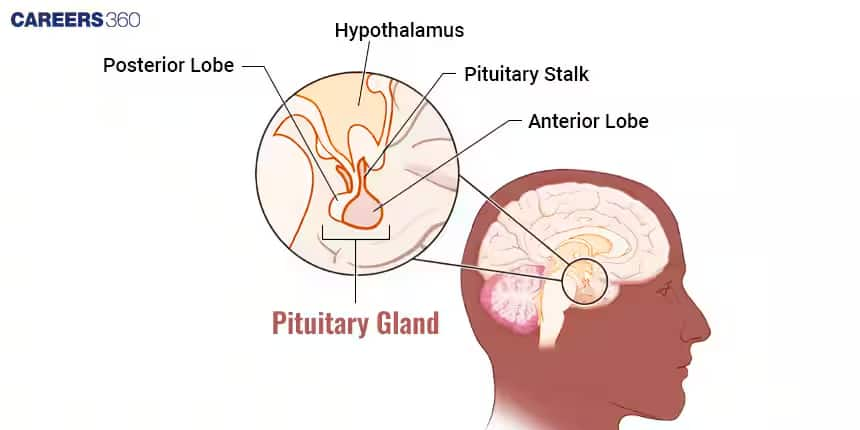
The Pineal Gland
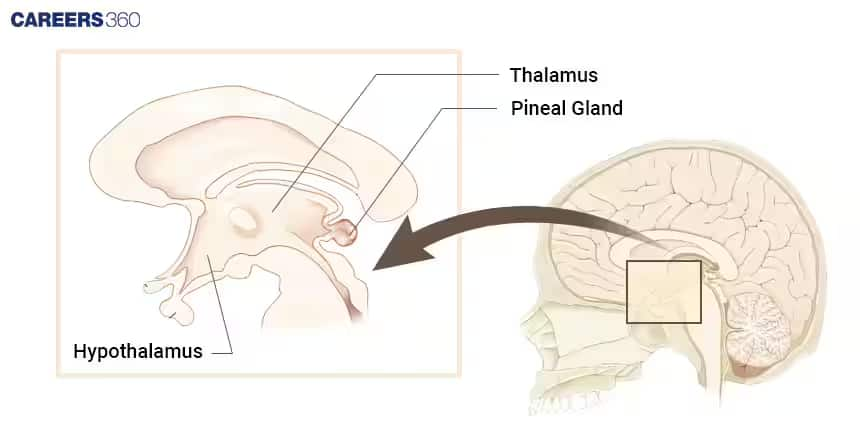
The Thyroid Gland
The thyroid gland consists of two lobes that are present on either side of the trachea.
An isthmus is the point of interconnection between two lobes (a thin flap of connective tissue).
The thyroid gland synthesizes two hormones, tetraiodothyronine or thyroxine (T4) and triiodothyronine (T3).
Iodine deficiency results in hypothyroidism and enlargement of the thyroid gland, commonly called goitre.
Hypothyroidism causes stunted growth (cretinism) and mental retardation.
Parathyroid Gland
Parathyroid glands are four in number.
They are present on the backside of the thyroid gland.
The parathyroid gland secretes parathyroid hormone (PTH), which is a peptide hormone.
Its secretion is controlled by the circulating levels of calcium ions.
PTH stimulates the process of bone dissolution/ demineralisation.
Thymus
It is a lobular structure present between the lungs behind the sternum.
The thymus gland helps in the development of the immune system and secretes the peptide hormones called thymosins, which help in the differentiation of T-lymphocytes.
Adrenal Gland
There is a pair of adrenal glands at the anterior part of each kidney.
The gland consists of two types of tissues. The centrally located tissue is called the adrenal medulla, and the outside adrenal cortex is present.
The deficiency of hormones causes acute weakness and fatigue, leading to a disease called Addison’s disease.
The adrenal medulla synthesizes two hormones: adrenaline/epinephrine and noradrenaline/ norepinephrine. These are commonly called catecholamines.
Adrenaline and noradrenaline are called emergency hormones or hormones of Fight or Flight because they are secreted in response to stress emergencies.
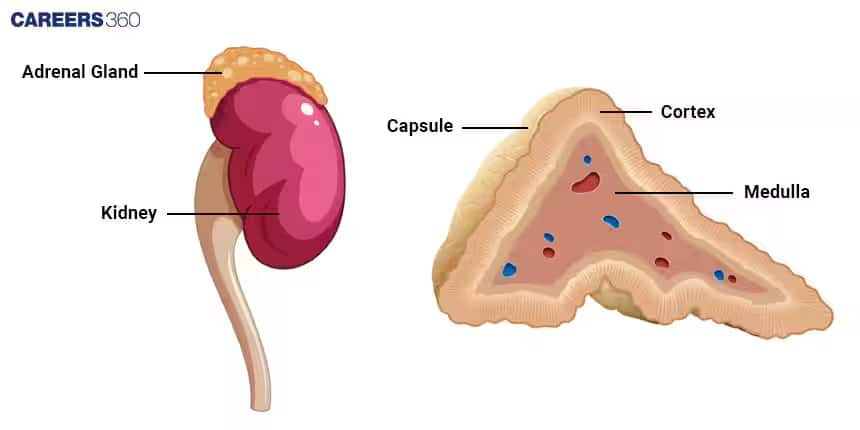
Pancreas
The pancreas is a mixed gland that acts as both an exocrine and endocrine gland.
The endocrine part is called ‘Islets of Langerhans’.
α-cells and β-cells are types of cells in the Islet of Langerhans. The α-cells produce glucagon, while the β-cells secrete insulin.
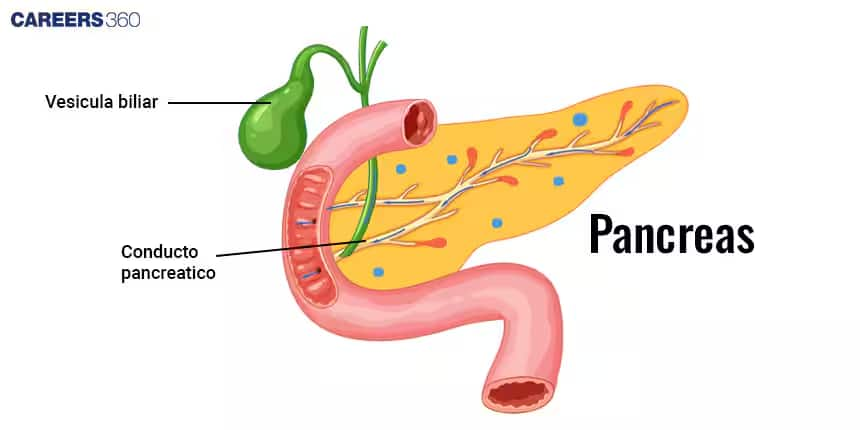
Testis
One pair of testes is present in the scrotal sac in males.
It acts as a primary sex organ and an endocrine gland.
It contains seminiferous tubules and stromal or interstitial tissue.
Leydig cells produce androgens, mainly testosterone.
Androgens maintain the functions of the male accessory sex organs like the epididymis, vas deferens, seminal vesicles, etc., and promote muscular growth, growth of axillary and facial hair, low pitch of voice, etc.
Ovary
A pair of ovaries is located in the abdomen in females.
It is the primary female sex organ.
It produces two groups of steroid hormones called estrogen and progesterone.
Estrogens regulate female sexual behaviour, and progesterone supports pregnancy.
Hormones of Heart, Kidney, and Gastrointestinal Tract
The heart contains an atrial wall that produces a hormone called atrial natriuretic factor (ANF). ANF causes dilation of the blood vessels, which decreases blood pressure.
Erythropoiesis is stimulated by erythropoietin, which is produced by the juxtaglomerular cells of the kidney.
Gastrin, secretin, cholecystokinin (CCK), and gastric inhibitory peptide(GIP) are the four major types of peptide hormones secreted by endocrine cells of the GI tract.
Many other non-endocrine tissues secrete hormones called growth factors, which are important for the normal growth of tissues and their repair/regeneration.
Mechanism of Hormone Action:
A complete description of the Mechanism of Hormone Action is given below:
- When a hormone binds to its receptor, it forms a hormone-receptor complex.
- Hormone-receptor complex formation leads to the development of certain biochemical changes in the target tissue.
- Hormones can be classified into different groups based on their chemical nature:
(i) Peptide, polypeptide, protein hormones - insulin, glucagon, pituitary hormones, hypothalamic hormones, etc.
(ii) Steroids - cortisol, testosterone, estradiol, and progesterone
(iii) Iodothyronines- thyroid hormones
(iv) Amino-acid derivatives - epinephrine.
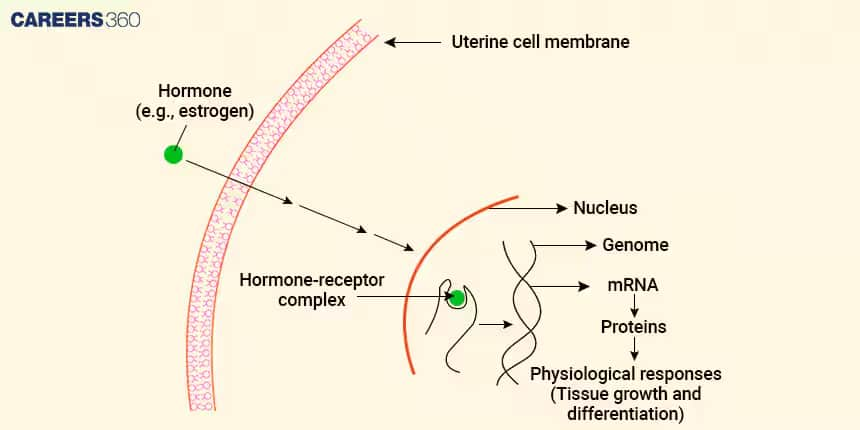
Also, Read
Chapter 19 Biology: Previous Year Questions and Answers
Given below are the previous year's questions of this chapter. Going through these allows students to get familiar with the type of questions asked in exams. For detailed clarification of topics, students can use the NCERT Class 11 Biology Chapter 19 Notes Chemical Coordination and Integration.
Question 1: Which of the following conditions is not linked to a deficiency of thyroid hormone?
Option 1. Cretinism
Option 2. Goitre
Option 3. Myxedema
Option 4. Exophthalmos
Answer:
Exophthalmos happens due to hyperthyroidism. Exophthalmos, or bulging of the eyes, is a common symptom of Graves' disease, a form of hyperthyroidism. It occurs due to inflammation and swelling of the tissues and muscles behind the eyes caused by an autoimmune response.
Hence, the correct answer is option (4), Exophthalmos.
Question 2: Which of the following organs in mammals does not consist of a central 'medullary' region surrounded by a cortical region?
Option 1. Ovary
Option 2. Liver
Option 3. Adrenal
Option 4. Kidney
Answer:
The ovary has a cortical region on the outside, containing follicles, and a medullary region in the center, which contains blood vessels and connective tissue. Adrenal Glands consist of an outer cortex, which secretes corticosteroids, and an inner medulla that secretes adrenaline and noradrenaline. The kidney has an outer cortex containing nephrons and an inner medulla consisting of renal pyramids and tubules. It's only the liver that does not have a defined central medullary region or an outer cortical region.
Hence, the correct answer is option (2), Liver.
Question 3: Hormones are called chemical signals that stimulate specific target tissues. Which is the correct location of these receptors in the case of protein hormones?
Option 1. Extracellular matrix
Option 2. Blood
Option 3. Plasma membrane
Option 4. Nucleus
Answer:
Hormones act as vital chemical signals within the body, responsible for stimulating particular target tissues to initiate specific responses. For protein hormones, their receptors are embedded in the plasma membrane of cells. This location is important as it allows the hormones to bind to the receptors on the plasma membrane and trigger a cascade of cellular activities essential for maintaining various physiological processes.
Hence, the correct answer is option (3), Plasma Membrane.
Question 4: Which hormone regulates the basal metabolic rate (BMR) of the body?
Option 1. Insulin
Option 2. Thyroxine
Option 3. Adrenaline
Option 4. Glucagon
Answer:
Thyroxine regulates the basal metabolic rate by controlling the rate of oxidation of carbohydrates, proteins, and fats in the body. It influences overall energy production and heat generation, thereby maintaining normal metabolism.
Hence, the correct answer is option (2), Thyroxine.
Question 5: The posterior pituitary gland releases
Option 1. Growth hormone and prolactin
Option 2. Oxytocin and vasopressin
Option 3. ACTH and TSH
Option 4. FSH and LH
Answer:
The posterior pituitary gland releases oxytocin and vasopressin (ADH). These hormones are synthesised in the hypothalamus and stored in the posterior pituitary before being released into the bloodstream.
Hence, the correct answer is option (2), Oxytocin and vasopressin.
Also Read:
